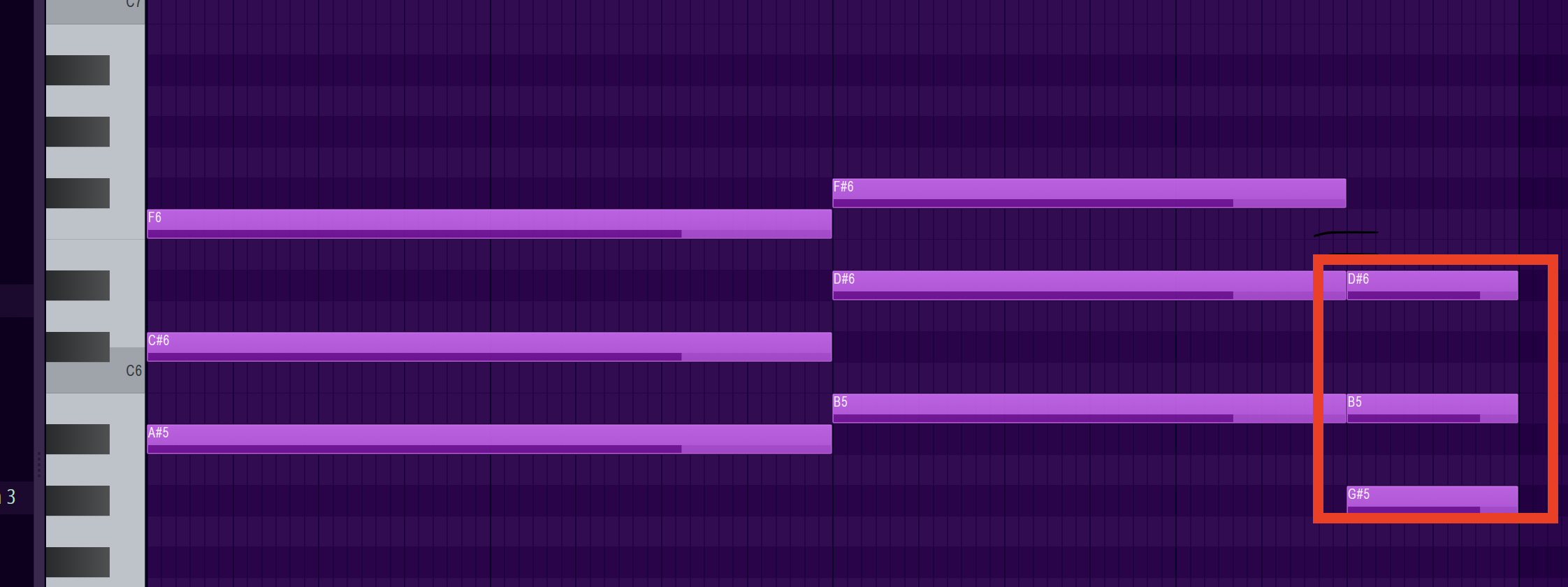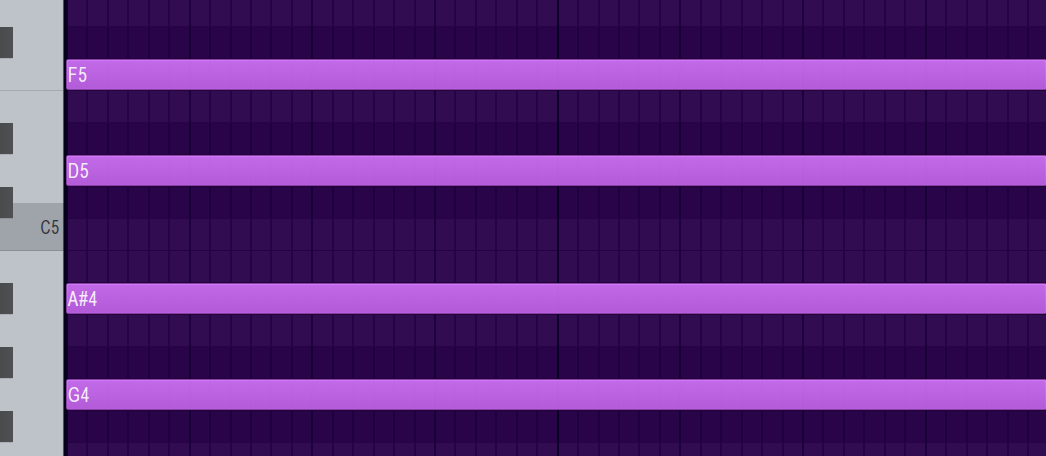
I’ve always hated the common producer advice of “just winging it.”
“Oh, just do whatever you feel, bro.”
“Let the music flow through you, bro.”
“It’s all in the feeling, bro.”
“Just winging it” has never helped me get better at anything meaningful, especially not music.
I make the most progress when I understand how and why something works.
For example:
I spent a lot of time fumbling around when I was learning to sample.
BUT…
Nailing down the process helped me make life-changing beats like ‘Centerfold’ and ‘Error’, just to name a few.
Centerfold earns me over $1,000 per year just on the beat being streamed and synced.


And Error became one of the greatest songs in South African history.


Need I say more?
Learning a repeatable system for sampling paid off insanely.
Similarly, I spent a lot of time just clicking random notes on my piano roll (hoping I’d get a decent melody).
BUT…
Nailing down a basic melody making process has helped me make my solo music stand out.
“No Pleasure” is just one example.
No Pleasure has a few thousand streams on all DPSs.

So far.
And content for '“No Pleasure” has well over a half million views.



So far.
I can guarantee you this is not the result of “just winging it.”
A simple repeatable system pays off.
I promise you it doesn’t take deep music theory (you just need a system that works).
And that's what I'm going to show you.
Don’t reinvent the wheel, use the damn wheel

Shout out to the caveman who invented the wheel.
We still use that thing.
And that’s the point with any invention or convention that exists.
It’s there to make things easier for everyone else.
It’s there so that we don’t have to reinvent it each time we need it again.
Could you imagine if you had to re-invent the wheel from scratch each time you needed a damn wheel?
Yet, this is what so many producers do with their melodies.
Instead of using the damn wheel (basic music theory in this case).
They are hell bent on inventing a new way to make a melody.
Then are shocked when it comes out sounding terrible.
Just use the damn wheel, bro (Jesus Christ).
Choose your "wheel" (choose your chords)
There are many basic wheels;
-
Wooden spoke
-
Steel
-
Alloy
Similarly, there are many kinds of basic chord progressions.
Let’s explore one for today as an example so you can add it to your toolbox immediately.
Then I’ll give you a system for easily finding your own simple chord progressions that you can use repeatedly to make your music sound amazing.
The “Travis Scott Chord Progression”
This is my favorite basic chord progression (which is really just 2 simple parts).
Minor triad.

Followed by a major triad.

But even the naming gets to be a bit too complex (and is outside the scope of things that matter to this conversation).
But I’m sure some nerd will still correct me when this post becomes a video essay on my channel.
Look, no one cares (especially not when you’re just starting out).
The only thing you need to know is how it’s built.
The structure they create when put together.

The only thing you need to understand is the note spacing relationship between the first chord (minor) and the second (major).
Here's a deeper explanation of exactly how you build this chord progression (without thinking in confusing music theory terms).
Place your first note anywhere you like. I’ll use F.

Then go up 2 spaces or notes and place another note on the third space you count.

Now go up 3 spaces from here and place one more note on the fourth space you count.

Minor chord done.
We can duplicate this over for a second chord and make 3 minor adjustments to it.

We’ll move this bottom note up one space.

This middle note up two spaces.

And this top note up just one space.

This is how it’s built every single time.
No matter what the notes actually are.
As long as the note spaces are exactly the same as this demonstration, you’re going to get the same vibe every time.
This chord progression is sometimes referred to as the “Travis Scott chord progression.”
The vibe given off has a certain ‘country twang’ while also conveying high energy.
It’s used in many of Trav’s best songs.
My favorite example is “Houstonfornication” - Astroworld (2018, Epic Records/Sony, Cactus Jack, Grand Hustle).
That uses a B flat minor chord.

Followed by a B major chord.

Which comes together to create a chord progression shape that looks just like the basic structure we talked about.

Same progression.
Different notes.
Same mood (vibe).
Different tone.
This chord progression ends with an A flat minor.

We’ll talk more about that in a bit when we address methods for spicing up the basic chord progressions.
Not just Travis Scott…
The chord progression does not ‘belong’ to Travis Scott.
This is a common pop music chord progression
Except for a small group of internet producers, no one refers to it as the “Travis Scott chord progression.”
This is demonstrated by Roy Woods’ new album ‘Mixed Emotions’ (where he used this progression in 2 different songs).
The first example is Made Mistakes, the intro.
The first chord is an A sharp minor.

And the second chord is a B major chord.

These basic triads come together to make the full progression.

The second example from Woods is That Thang (ft. Jada Kingdom), which is track 7 on Mixed Emotions.
The first chord is a G minor 7.

And the second chord is an A flat major 7.

(A flat is another way of say G sharp - so you could also technically refer to this as a G# major chord).
As triads, these chords come together to make the full progression.

They become 7ths by “adding the next harmonizing notes” in the respective scales of each chord.
That’s not the technically correct way to say that.
Further, this is getting outside the realm of things that are necessary to discuss in this lesson.
But, just a helpful tip you might enjoy (one bonus tip for spicing up chords).
You can create a seventh of any fundamentally built minor chord by;
-
going 2 notes up from the third note in the triad
-
placing a fourth note on that third space.

You can create a seventh of any fundamentally built major chord by;
-
going 3 notes up from the third note in the triad
-
placing a fourth note on that fourth space.

By “fundamentally built”, i just mean that the chord is built in the most basic format with the root note being the same as the key of the chord.
No fancy voicings or chord inversions.
Understand the basics first.
Then the fancy voicings and chord inversions are how you can take this concept to a whole new level.
Let’s talk about that within a system that you can use to create unlimited good melodies.
The Melody Development Wheel

Here’s how to make the most of this basic music theory concept.
No complications required.
1. Drop the ego.
Don’t reinvent the wheel, use the damn wheel.
I get grieved a few times a week for talking about how important basic chord progressions are.
And I think that’s great (honestly).
Not only will there be producers who refuse to use the only method for making good melodies.
But they will also spend most of their time arguing in the comments of YouTube Videos and Instagram Reels.
Less competition overall for the people willing to put their heads down, learn, and work.
If you can let your ego go.
And use the systems that have been in place for thousands of years.
Your melodies are going to sound amazing in no time.
2. Listen to the music you like (or popular music)
The music you like will influence your specific melody making style.
That’s the main reason I like the “Travis Scott chord progression” so much.
Not necessarily because of Travis Scott.
But because many of my favorite pop and trap songs use that chord progression really well.
3. Listen to chord progressions in that music.
Over 80% of all songs will follow basic, popularized chord progressions.
Listen to music.
Over time, note the songs whose melodies make you feel something deeper.
There’s a good chance that it’s the chord progression causing that feeling.
And the best part is that this will differ from person to person.
4. Look up how that chord progression is built.
Figure out the structure of the chord progressions you like.
This might seem like the most intensive part of this process
But it’s made easy by things like Chordify.net which has the chord progressions drawn out for many songs.
And once you get more adept, you can even use tools like Tunebat.com to find the key of a song
And then build the chords by ear based on this knowledge (in the rare case that Chordify does not already have your song mapped out).
5. Study, remember, save the chord progression.
Now that you know the chord progression structure, remember it.
I just learn to make it once and then save it within a folder in the Centerfold Drum kit (gets updated regularly for all purchasers).
Do this so that you build an arsenal of chord progressions that:
-
Fit your style
-
Will work each time
All the best musicians have always done this (and always will).
6. Build upon the chord progression.
There are many ways to spice up basic chord progressions.
We talked about how Houstonfornication finishes its chord progressions with one last chord (resolving chords).
You can also use a concept called chord inversion.
This is when you move the notes of the chords up or down to give it a distinct feeling or character.
Chord development is something I’m going to write about soon (so if you want to see that ASAP drop a comment letting me know).
You can also check out this chord progression workshop I have on my channel.
7. Layer sounds (sound selection).
This is really where the magic happens.
No two producers layer sounds the same.
Even when you’re trying to copy someone exactly, you'll get something slightly different.
This is another topic I’ll be writing about soon.
So (again) let me know in the comments if you want that ASAP.
For now, let me give you the workflow I use when layering melodies (which I described a few years ago in this video).
-
Start with keys, bells, Plucks (some kind of sound that is going to give your melody body)
-
Add an arp (add ambient texture to your melody)
-
Add a pad (fill up the stereo space with your melody, making it sound more full)
-
Add bass (do I even need to explain? - never leave out the bass)
-
Optional: Add a harmonizing top melody with some kind of lead instrument
8. PRACTICE.
This isn’t something you can do once and think it’s suddenly in your toolbox.
The Melody Development Wheel needs to be worked regularly.
I struggle when I go too long without practicing my melodies.
And I’ve had my melodies on CBS before.
View this post on Instagram
So never think you can practice too much.
Now get out there and make some bangers.
Blessings,
Darth Chu
Get Sound Kits 👇






